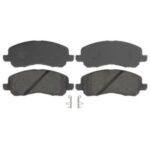A Coolant System Pressure Tester is an indispensable tool for any car owner or mechanic. It allows you to quickly and accurately diagnose leaks in your vehicle’s cooling system, preventing costly repairs down the road. This guide will walk you through the process of using a coolant system pressure tester and help you find the right one for your needs.
Why Use a Coolant System Pressure Tester?
A pressure tester simulates the conditions within a running engine’s cooling system by pressurizing it with air. This pressure helps reveal leaks that might not be apparent under normal operating conditions. These leaks can occur in various components, including:
- Radiator: Cracks or damage to the radiator can lead to significant coolant loss.
- Hoses: Aging or worn hoses can develop cracks and leaks.
- Heater Core: Leaks in the heater core can cause a sweet smell inside the cabin and reduced heating efficiency.
- Head Gasket: A blown head gasket, a serious engine problem, can often be detected with a pressure test. This often requires removing spark plugs for a more accurate diagnosis.
- Engine Block: Cracks in the engine block itself, while rare, can also be identified.
Choosing the Right Coolant System Pressure Tester
Coolant system pressure testers come with various adapters to fit different radiator caps, coolant reservoirs, and radiator designs. Consider the following when selecting a kit:
- Vehicle Compatibility: Ensure the kit has adapters compatible with your specific vehicle make and model.
- Pressure Range: Most systems require testing up to 15-18 PSI. Ensure the gauge has a sufficient range.
- Adapter Variety: A kit with multiple adapters offers greater versatility for testing various vehicles.
- Quality and Durability: Invest in a well-built tester with a reliable gauge for accurate readings. You can often purchase adapters and pumps separately if needed.
How to Use a Coolant System Pressure Tester
Before beginning the test, ensure the engine is cold and parked on a level surface. Low coolant levels should be topped off with water for testing purposes. Always exercise caution when removing the radiator cap, especially if the system is still pressurized.
-
Connect the Tester: Attach the appropriate adapter to the radiator or coolant reservoir. Most testers connect by twisting clockwise to lock in place.
-
Pressurize the System: Use the pump to gradually increase pressure to the manufacturer’s recommended level (typically around 15 PSI). Do not exceed the maximum pressure rating (usually 18 PSI) as this can damage the cooling system.
-
Observe the Gauge: Watch the gauge for pressure drops. A steady drop indicates a leak. Inspect the radiator, hoses, and other components for visible signs of coolant leakage.
-
Locate the Leak: Identify the source of the leak. Look for dripping coolant, wet spots, or stains.
-
Release Pressure: Once the test is complete, slowly release the pressure by twisting the tester counterclockwise. Allow pressure to fully dissipate before disconnecting to avoid hot coolant or water splashes. Always clean and store your tester in a cool, dry location for longevity.
Conclusion
A coolant system pressure tester is a valuable diagnostic tool for maintaining your vehicle’s cooling system. By identifying leaks early, you can prevent overheating, engine damage, and costly repairs. Investing in a quality tester and understanding its proper use can save you time and money in the long run.


